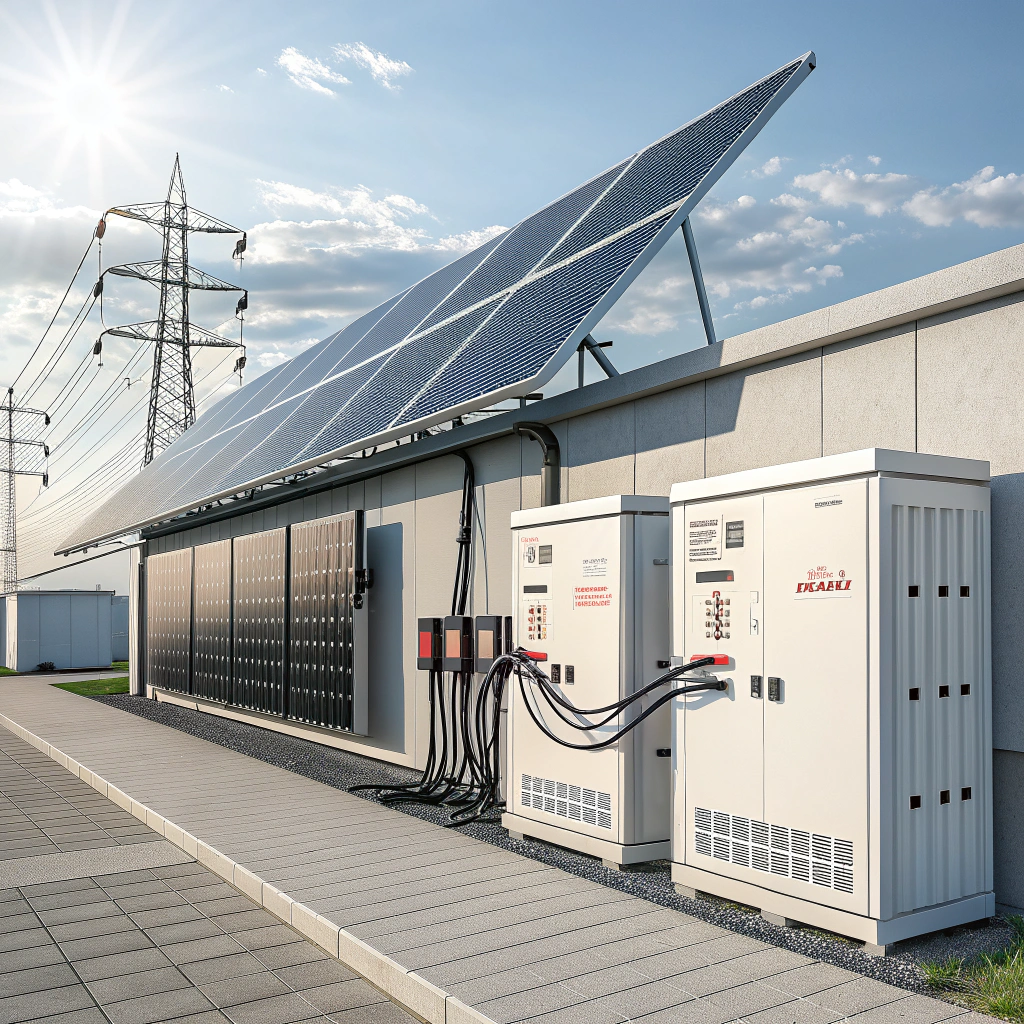Make Household Photovoltaics Smarter?
•
Make Household Photovoltaics Smarter?
Struggling with inefficient solar energy usage at home? Discover how smart EMS systems can revolutionize your household photovoltaic setup.
Smart EMS systems optimize household photovoltaic energy storage by intelligently managing charging/discharging cycles, reducing grid dependency, and maximizing self-consumption of solar energy.

While solar panels capture energy, true efficiency comes from smart management. Let's explore how modern technology transforms passive systems into intelligent energy networks.
How Intelligent EMS Systems Optimize Charging and Discharging Strategies for Household Photovoltaic Energy Storage?
Ever wondered why your solar batteries drain faster than expected? The answer lies in outdated energy management.
Intelligent EMS systems use real-time data and AI algorithms to:
- Prioritize solar energy consumption during peak production
- Store excess energy strategically
- Discharge batteries during high tariff periods
- Extend battery lifespan through optimized cycles
The Science Behind Smart Energy Allocation
Modern EMS systems employ three-layer intelligence:
-
Predictive Layer
Uses weather forecasts and usage patterns to anticipate needs -
Real-Time Control Layer
Makes millisecond adjustments based on current conditions -
Learning Layer
Adapts algorithms through machine learning
| Feature | Traditional System | Smart EMS |
|---|---|---|
| Response Time | Minutes | Milliseconds |
| Adaptability | Fixed Rules | Dynamic Learning |
| Efficiency Gain | 15-20% | 30-45% |
Battery Preservation Techniques
Through my work with residential solar systems, I've observed how improper cycling can halve battery lifespan. Smart EMS addresses this by:
- Avoiding deep discharges (maintaining 20-80% SOC)
- Implementing temperature-compensated charging
- Performing occasional equalization charges
Recent studies show these practices extend lithium battery life by 2-3 years.
Smart EMS always prioritizes grid sales over self-consumption. False
Optimal systems maximize self-use first, as grid sales typically offer lower returns.
Battery Energy Storage Cabinet + EMS: Building a Visualizable and Controllable Household Energy Network?
Tired of being blind to your home's energy flows? Visualization transforms solar from mystery to mastery.
Integrated battery cabinets with EMS provide:
- Real-time energy flow monitoring
- Historical consumption analytics
- Remote control via mobile apps
- Automated emergency backup activation
The Dashboard Revolution
During a recent home installation, the homeowners' energy habits changed dramatically once they could:
- See exact solar production vs consumption
- Identify vampire loads (always-on devices)
- Schedule high-power appliances for solar hours
Key metrics to monitor:
- Instantaneous PV generation (kW)
- Home consumption breakdown (%)
- Battery state of charge
- Grid import/export balance
Remote Management Capabilities
Modern systems offer:
- Push notifications for unusual activity
- Geo-fenced operation modes (e.g., "Vacation Mode")
- Voice control integration (Alexa/Google Home)
- API connections to smart home ecosystems
Energy visualization alone reduces consumption by 5-15% according to DOE studies.
All EMS systems offer equal visualization features. False
Capabilities vary significantly between entry-level and premium systems.
From Intelligent Control to Remote Operation and Maintenance: The Future Development Direction of Household Photovoltaic Systems?
Imagine your solar system diagnosing itself before issues arise. The future is closer than you think.
Next-gen photovoltaic systems will feature:
- AI-powered predictive maintenance
- Automated firmware updates
- Cloud-based performance benchmarking
- Drone-assisted thermal inspections
The Rise of Proactive Maintenance
Through my industry contacts, I've seen how remote O&M transforms service:
-
Early Fault Detection
Micro-inverters report performance deviations instantly -
Virtual Troubleshooting
Technicians guide repairs via AR interfaces -
Parts Pre-Dispatch
Replacement components shipped before site visits
Integration with Smart Grids
Future developments include:
- Dynamic grid service participation
- Vehicle-to-home (V2H) energy sharing
- Blockchain-enabled peer-to-peer trading
- Weather-adjusted performance guarantees
| Technology | Current Adoption | 2025 Projection |
|---|---|---|
| Remote Diagnostics | 30% | 75% |
| Automated Updates | 15% | 60% |
| AI Optimization | 5% | 45% |
All solar systems will eventually self-repair. False
While diagnostics will improve, physical repairs will still require human technicians.
Conclusion
Smart EMS transforms photovoltaic systems from passive generators to intelligent energy managers, optimizing consumption, extending equipment life, and paving the way for future innovations.




